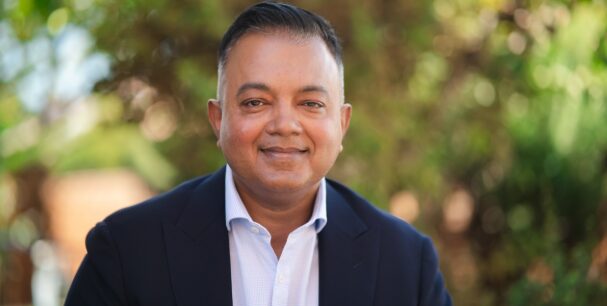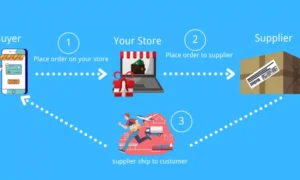Early Vision and Motivation
- You’ve become a recognized voice in financial crime prevention across Asia Pacific. What first sparked your interest in challenging the industry’s traditional approaches?
As my career evolved, I have been involved in a wide variety of financial crime transformation programs.These programs were either aimed towards achieving tactical fixes so as to “pass” regulatory or audit requirements or in a number of occasions just to cope up with escalating volumes and other tactical business imperatives., As these programs went through various stages of implementation and in a lot of cases stopping mid-way, I noticed a fundamental flaw in detecting financial crime and the overall approach to transformation. The methods relied on were outdated, reactive and incapable of addressing the rapidly evolving nature of criminal activity. Adding to the situation was the mindset of missing out — where any emerging technology stack or a solution would suddenly become “highly desirable”, not necessarily understanding that there are fundamental capabilities that must be in place to truly achieve the desired outcome. I realized that if we do not establish these fundamental capabilities and do not evolve alongside technology and evolving criminal typologies, we would always be one step behind.
- Looking back at your career, what experiences shaped your belief that compliance needed to evolve?
Fundamental to my belief that compliance needs to evolve is the reality- that the financial world is not linear anymore and that today’s reality is, that the financial world is exponential and with a plethora of usage instruments — (digital wallets, Buy Now Pay Later, cross border and crypto as examples). In such a situation traditional rule based detection may not be fit for purpose anymore. When you to add to this changing regulatory expectations and a huge influx of emerging technology solutions and complex data structures — there is no doubt in my mind that compliance would do well to evolve into a data driven and ethically AI enabled discipline.
Reimagining Financial Crime Prevention
- You often talk about reimagining financial crime prevention. What does that vision look like?
It’s nice that you ask this question — (because in-spite of organisations spending millions of dollars in upgrading capabilities or in a lot of cases focussing on establishing a brand new financial crime threat prevention model) — it is estimated that circa USD485 billion have been lost in fraud and scams alone last year). In my opinion therefore, re-imagining financial transformation is an absolute necessity. My vision is based on establishing a core set of 24 capabilities or “building blocks” as I call them, that span across data, infrastructure, human resource and governance to establish an operating model that is dynamic and evolves with emerging typologies. Artificial Intelligence then becomes the tissue that joins these capabilities, to turn data into detection, people into investigators and business process as early warning capabilities.
- What role do people and processes play in this new model, alongside AI?
Human Resources are key to achieving the true benefits of a financial crime transformation program and threat prevention models. I do however see a change in the way they will operate – which is more towards intelligent orchestration in the immediate future, as against the current tactical. Deciding which typologies to track, how to better measure effectiveness, oversee the deployment of AI models and have a strong human control on strategic decisions. They will continue to interpret law and regulatory requirements to design detection scenarios and set ethical boundaries.
Many may not realise that while AI will continue to learn — it is the human that provides the “tags or labels” for contextual learning.
The Role of AI in Compliance
- AI is at the center of your approach. How exactly does it change the game in fighting financial crime?
AI fundamentally shifts the way we analyze data. It can process vast amounts of financial transactions, spot irregularities and identify patterns that humans would most likely miss. It is not just about volume or technology alone — it’s about understanding behavior and context. Machine learning models can be trained to detect even subtle signs of fraud or money laundering, enabling institutions to act before criminals succeed.
- What are some of the biggest hurdles institutions face when implementing AI?
I made 2 references earlier (one was for the fear of missing out on anything latest in technology and other was the 24 building blocks). Depending on the context, these 2 may very well be the major hurdles in achieving the benefits of AI. Industry surveys indicate that ~92% companies plan to increase their AI spend in financial crime detection and 1% believe that their anti-financial crime investments have reached maturity. So when you look at it with a practical lens — the biggest hurdles would be issues with data quality, lack of data infrastructure, data aggregation with external sources underestimating change, AI literacy, resources that are data and operations blend and an AI focussed governance and compliance program.
- For companies starting this journey, what’s your recommended roadmap for adopting AI?
Financial crime prevention units have started to adopt AI, however an integrated AI enabled Operating model is most effective when implemented in phased and deliberate stages
I usually advise a phased approach: start small with static risk rules and basic threshold monitoring, then scale as the technology proves its effectiveness, eventually moving toward independent pattern recognition.
Challenges and Industry Mindset
- Breaking away from industry traditions can’t be easy. What challenges have you faced pushing for this change?
The biggest challenge is mindset. Many professionals are reluctant to abandon what has worked in the past, even if those methods no longer deliver the results they expect. People are often reluctant to move away from what has worked in the past, sometimes clinging to their recent change initiatives even if the change does not generate results they set out to achieve. Convincing people that the financial world is shifting and that we must adapt with it is not always easy. But persistence pays off. We’re now seeing more organizations embracing AI-driven solutions as they recognize its potential to reshape compliance.
- How did you deal with the initial pushback from institutions when you introduced your ideas?
These pushbacks are inevitable, for obvious reasons but my commitment to the vision has only strengthened my resolve. Over time, as results became more evident, with small but tangible benefits that have started to flow more organizations are beginning to understand and accept that AI-driven solutions are not quick fixes.
Unique Approach and Recognition
- Beyond the technology itself, what do you think sets your approach apart?
For me, it’s not just about AI as an emerging technology — it’s about creating an ecosystem where AI complements human judgment. I try to bridge technology with strategy and human insight, which is what makes the difference. My expertise lies in operationalizing regulatory requirements through advanced technology, which makes compliance both effective and efficient.
- You’ve been a keynote speaker and advisor to many institutions. How has the industry responded to your message?
I have been fortunate to see growing acceptance. When I first began, there was significant pushback. Today, many organizations are more open to exploring AI’s role in compliance. The feedback I receive — whether from industry events or in direct conversations — is that leaders and industry participants appreciate how I simplify complex topics and offer actionable solutions. It is rewarding to see institutions take these strategies and start building what I call dynamic and intuitive operating models
The Future of Financial Crime Prevention
- Looking ahead, where do you see the biggest breakthroughs happening in financial crime prevention?
There are quite a few actually. The one that I find very fascinating is the hyper personalisation of financial crime prevention — very similar to some of the leading names in OTT (Over the Top service) that offer personalised content. This hyperpersonalisation would be at a customer level with the plumbing connected to the overall risk profile. There is of course work happening around cross border intelligence and synthetic profiles — which I am sure readers would have read about.
- For organizations that want to start this journey, what advice would you give them?
My advice would be to focus on the problems not on the technology, baseline against the 24 building blocks (readers can reach out to me for details), establish data foundations and embed governance and explainability from Day 1.
Closing Statement
As financial crime grows increasingly complex, Kush Mukherjee stresses that the industry can no longer rely on outdated systems. His vision centers on proactive strategies powered by AI, supported by strong data, people and processes, to stay ahead of evolving threats.
What sets him apart is his ability to merge technology with human judgment, creating solutions that are both practical and forward-looking. By challenging legacy thinking, Mukherjee shows how financial institutions can shift from reacting to crime to preventing it altogether.
“AI is not a destination, it is however a significant milestone in the dynamic journey of financial crime prevention,” he notes. Connect with Kush Mukherjee on LinkedIn


































